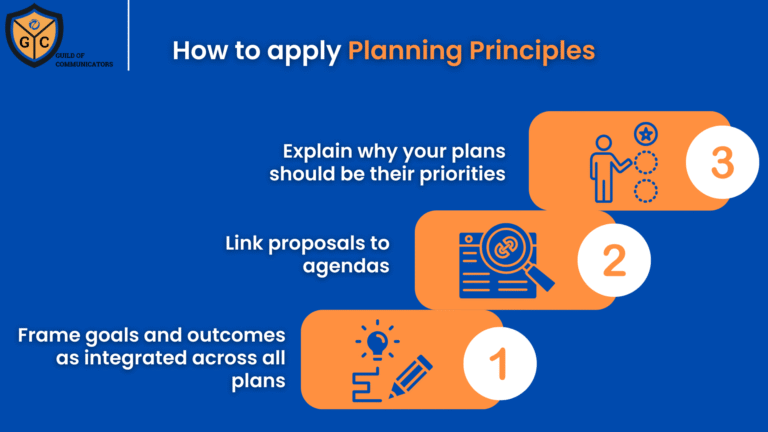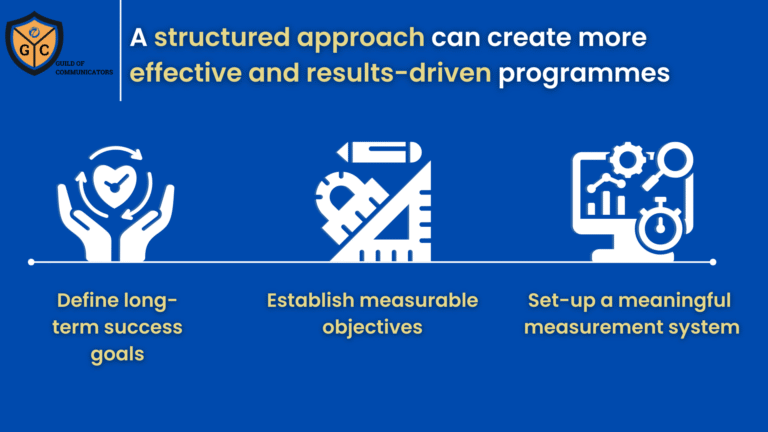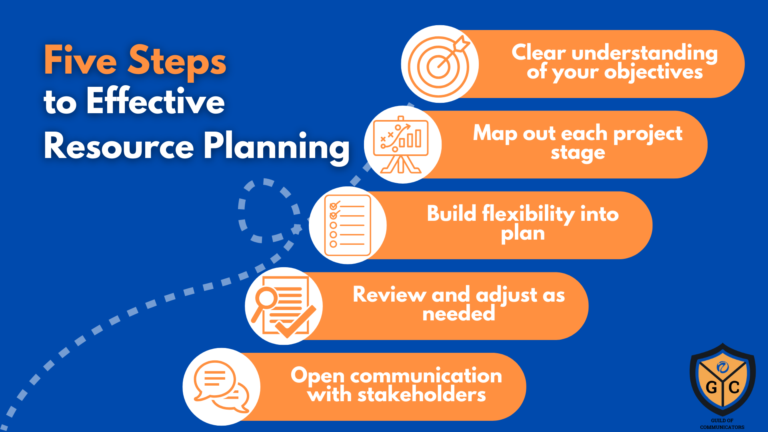In a perfect world, each executive would have a dedicated communications advisor. These advisors would be in sync, coordinating efforts with shared timelines and strategic outcomes.
But that’s not the reality for most communication teams.
In many organisations, a single communicator is tasked with supporting multiple executives, each with their own priorities, communication needs, and timelines. This setup creates tension between delivery and strategic alignment — and often leaves communicators without the authority, capacity, or clarity to connect the dots.
The Challenge of Supporting Multiple Executives
It’s common for communicators to support multiple leaders across the business.
Each executive may be working towards different goals: one focused on investor confidence, another on employee engagement, and another on thought leadership. They may not be aware of each other’s plans or consider how their messages affect the organisation’s overall communication footprint.
In this situation, communicators are often stuck in reactive mode — producing outputs without a shared reference point for outcomes. This can lead to duplicated efforts, overuse of channels, and audience confusion. Without strong initiative from the communicator, mismatched priorities emerge, and opportunities to optimise content, cadence, or influence are missed.
This also limits the communicator’s ability to contribute strategically. When each executive’s agenda is treated as a siloed task list, communicators have no clear way to negotiate or prioritise. The result is a high volume of fragmented outputs with unclear value, and a team that appears operational-tactical rather than strategic.
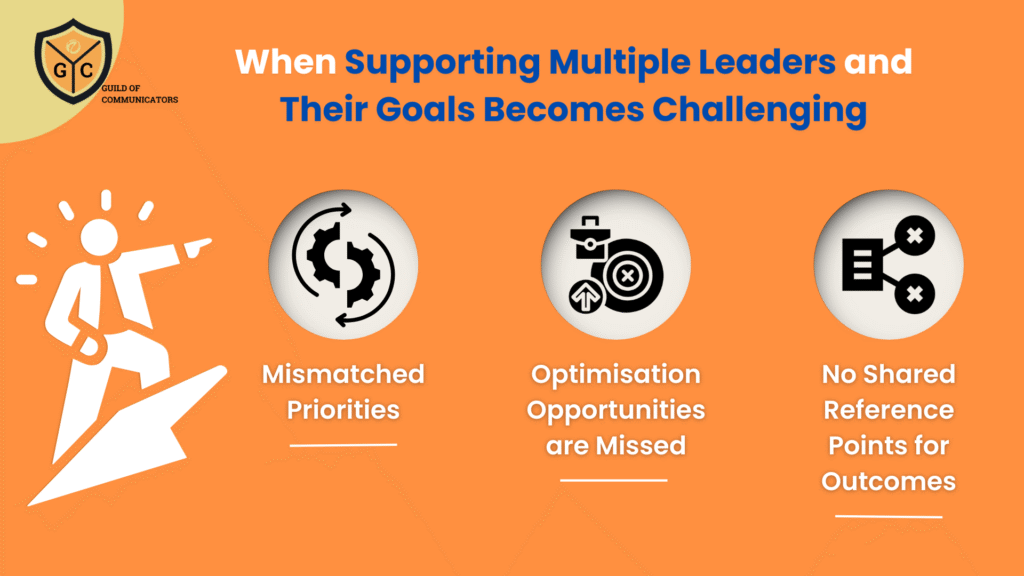
Why This Matters for the Organisation and Executives
When agendas aren’t connected, the organisation pays the price. Stakeholders encounter mixed messages. Teams may be unclear about priorities. Campaigns compete for attention, even when they’re targeting the same audience.
At the executive level, the risks are higher: leaders may find their efforts diluted, overlooked, or even unintentionally at odds with one another.
Executives working in isolation may also lose opportunities for collective influence. For example, what could have been a strong campaign on organisational culture ends up as four disconnected posts, each focused on a separate department.
Internally, this creates confusion. Externally, it weakens credibility and consistency.
Communicators are in a unique position to prevent this. But it requires moving beyond request fulfilment into structured management of competing agendas. The communicator must facilitate visibility, propose integration points, and offer solutions that serve the organisation first and move beyond individual preferences.
Three Approaches to Making This Work
One way to improve this situation is through agenda mapping — building a shared calendar or matrix of all executive communications activities. This doesn’t just help with scheduling; it reveals areas of overlap, missed opportunities, and potential alignment. The communicator can use this to flag risks and propose sequencing that improves clarity.
A second approach is adopting communication tiers. This helps executives and communicators prioritise content types and decide what belongs in each tier — from critical organisational messages down to discretionary thought leadership. It also supports better use of time and channels by matching the format to the purpose.
The third — and often most valuable — approach is what we call the Combiner Protocol. This involves reviewing each executive’s agenda, extracting the communication objective behind it, and identifying where these can be merged or reframed in support of a shared organisational outcome. This is not just editing for cohesion. It’s a strategic re-evaluation of what the organisation needs to say, and how each executive can contribute.
The Advantage of a Higher-Level Perspective
To manage multiple agendas effectively, the communicator must zoom out and think across the system. This higher-level perspective allows better planning, more efficient use of resources, and stronger cross-functional cooperation.
Psychologically, this reflects what’s known as global processing — the ability to perceive relationships and patterns across parts of a system. It’s essential for problem-solving and coordination. Communicators who stay in task mode (a more local or detail-focused approach) are more likely to miss these opportunities.
Other relevant cognitive tendencies include attribution bias, where people overestimate the impact of individual actions and underestimate context. Executives may not see how their communication efforts contribute to — or compete with — the wider narrative. Communicators who understand this can better frame their feedback and shift conversations towards shared value.
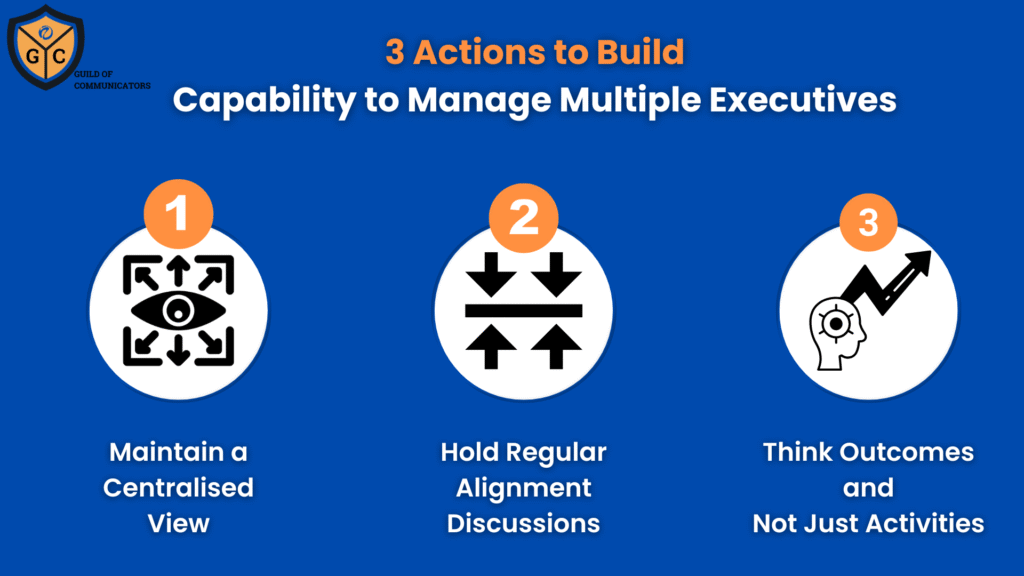
Centralise, Align and Work on Outcomes
Managing multiple executive agendas is not just a matter of capacity — it’s a matter of perspective.
The communicator who can navigate across timelines, priorities, and outcomes is better positioned to influence the quality and impact of organisational communications. Instead of waiting for ideal conditions or full authority, communicators can take initiative through tools and protocols that support coherence. By connecting the dots between executives and translating agendas into strategic outcomes, they demonstrate value that extends beyond output.
Here are three immediate, short-term actions to build capability in managing multiple executives and outcomes:
- First, build and maintain a centralised view of executive communications. Use whatever tools your team has — spreadsheets, project boards, calendars — but ensure you have visibility across agendas and channels.
- Second, schedule regular alignment discussions with each executive. Use these moments to clarify intentions, offer visibility into what others are doing, and suggest adjustments. Position these conversations as a way to protect the executive’s influence, not limit their ideas.
- Third, speak in terms of outcomes, not just activities. When discussing plans, make the organisational benefit clear. For example: “To maximise this announcement’s reach, we suggest waiting until the COO’s message has had time to land.” This reinforces your strategic role and helps guide prioritisation.
This capability grows with practice. And over time, it becomes one of the most important skills in organisational communications — shaping how leadership shows up and how the organisation is understood.
*****
Ready to elevate your communications career? The Guild of Communicators is your essential hub for professional growth, offering a vibrant community and best-in-class resources.
- Connect Membership: Ideal for early-career communicators seeking a supportive peer network, over 300 foundational and intermediate courses, and monthly interactive group sessions.
- Elevate Membership: For ambitious professionals, this tier includes premium frameworks, immersive live online workshops, dedicated career coaching, and mentorship with senior industry leaders.
Discover your path to impact and accelerated career growth.
Join the Guild of Communicators today at www.gocommunicators.com.
(For students: If you’re a student, undergraduate or postgraduate, explore our special student referral programme to lock in your membership fee for the second year! Drop us an email to find out more)
——-
Subscribe to join over 1500+ communicators and brands getting value every Tuesday while reading A Communicator’s Perspective, our weekly newsletter.

